|
This week we leave behind our usual format in order to explain to you the secrets of written humour. Don't worry, next week it's back to the usual claptrap.
How to Write Funny
The key to writing anything funny is to get a good start and, as we know from Julie Andrews 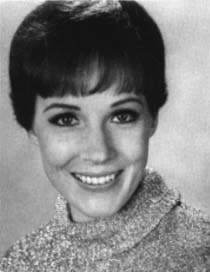 , the very best place to start is, at the very beginning. , the very best place to start is, at the very beginning.
In the beginning there was the void and darkness lay all around (as there really was nothing better to do) and so nobody wrote anything funny OR serious because there just really wasn't enough light.
Then, in 1879 Thomas Alva Edison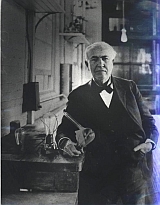 (the Wizard of Menlo Park) invented the light bulb. This was considered mostly a good thing but the people in 1881 weren't all that impressed because it meant Edison was up all hours of the night inventing things and playing his banjo. But it really wasn't only Edison's fault. We could, if we had nothing better to do stumble back a little bit further (the Wizard of Menlo Park) invented the light bulb. This was considered mostly a good thing but the people in 1881 weren't all that impressed because it meant Edison was up all hours of the night inventing things and playing his banjo. But it really wasn't only Edison's fault. We could, if we had nothing better to do stumble back a little bit further and we would discover that it was in 1811 that Sir Humphrey Davy discovered that passing a electric arc between two poles produced light. History does not record how the two poles felt about this. and we would discover that it was in 1811 that Sir Humphrey Davy discovered that passing a electric arc between two poles produced light. History does not record how the two poles felt about this.
But the significant thing here is that the invention of the light bulb made it possible (although not necessarily likely) to be funny (on paper) after eight o'clock at night. Which, as every one knows, is a pretty funny time of day. But regardless of the hour of day or time of night or the amount of light available, you, in your attempts to write funny, will find that you need some form of writing instrument to record your thrusts in the general direction of hilarity (successful and otherwise).
 You could use a pen or you could use a pencil . A pencil is good because so many of them come with a little eraser thingy on the non-writing end which can be used for removing any unfunny sentences or even words that somehow manage to get written down. (That is provided you notice). You could use a pen or you could use a pencil . A pencil is good because so many of them come with a little eraser thingy on the non-writing end which can be used for removing any unfunny sentences or even words that somehow manage to get written down. (That is provided you notice).
 These are only two suggestions though. One can, of course, write funny things using a crayon, a lipstick, a piece of charcoal or even just a stick if you happen to be standing (or squatting) on a beach or near wet cement. There is another possibility for writing in the winter but it involves consuming large quantities of fluid before hand. I have no slide but this raises the interesting question of what one writes ON. These are only two suggestions though. One can, of course, write funny things using a crayon, a lipstick, a piece of charcoal or even just a stick if you happen to be standing (or squatting) on a beach or near wet cement. There is another possibility for writing in the winter but it involves consuming large quantities of fluid before hand. I have no slide but this raises the interesting question of what one writes ON.
The first choice of funny people everywhere is paper. I really don't want to get into what the second choice is.
 Paper can be lined or unlined, white or coloured(although I personally wouldn't recommend black as it can be pretty depressing). But the most common sight that confronts and confounds a beginning writer is the blank white page. Paper can be lined or unlined, white or coloured(although I personally wouldn't recommend black as it can be pretty depressing). But the most common sight that confronts and confounds a beginning writer is the blank white page.
I realise that this is a chilling sight for any would-be writer but it is best to confront your fears and know your enemy. Here he is . .
This smug unfeeling bastard doesn't care a wit for you or your problems. He doesn't care if you are tired or uninspired, distracted or just plain lazy. His hunger must be fed. His hunger for words. It is insistent and strong but, and this is your deliverance, this hunger is satiable.
What a lot of conscientious writers fail to realise is that this hunger is merely for words. It doesn't matter what the words are. And herein lies your salvation. If you are blocked you can fill a page by writing, for instance, the single word "radio" over and over (of course if you are a humour writer it is better to write the word "bum" which is always funny). As you begin to work through your block you can move from the single word "radio" to the phrase "turn on the radio" (once again for the humour writer it is best to use the phrase: "touch my bum"). This is the easiest way to defeat the blank page.
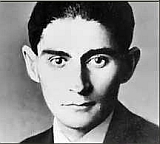 Okay, so now you're started. What next? The best thing to do is to introduce a funny character. If this is a personal essay you're writing then of course the funny character is you. Try to play up the ridiculous aspects of your personality. There must be plenty of them or you wouldn't be here would you? You can certainly begin by mocking your appearance - say, your over-sized ears, hilarious overbite or super-bushy eyebrows Okay, so now you're started. What next? The best thing to do is to introduce a funny character. If this is a personal essay you're writing then of course the funny character is you. Try to play up the ridiculous aspects of your personality. There must be plenty of them or you wouldn't be here would you? You can certainly begin by mocking your appearance - say, your over-sized ears, hilarious overbite or super-bushy eyebrows  but I find it is sometimes best to avoid this sort of thing. The last thing you want to do is make yourself cry. In my own case this is almost ludicrously easy. but I find it is sometimes best to avoid this sort of thing. The last thing you want to do is make yourself cry. In my own case this is almost ludicrously easy.
You see what I did there? I made fun of my own emotional fragility. Pretty funny eh?
The advantage of this approach is that, handled carefully, it can make people feel sorry for you and they're more inclined to at least politely snick at your vain attempts to be humorous. The danger is that you will come across not as hilariously pathetic but just plain old pathetic and that's not funny.
It is often better to avoid calling attention to yourself at all and the best way to do that is to create a funny character out of whole cloth, or whatever other material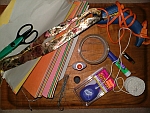 is close at hand. Start with a funny name. What sort of names are funny? Almost all German sounding names are funny, except, of course, to the Germans. The Germans, God bless 'em, can call each other Brunhilde and Siegfried without batting an eyelash but we are unable to do so without, at the least, suppressing a snicker. Use this to your advantage. is close at hand. Start with a funny name. What sort of names are funny? Almost all German sounding names are funny, except, of course, to the Germans. The Germans, God bless 'em, can call each other Brunhilde and Siegfried without batting an eyelash but we are unable to do so without, at the least, suppressing a snicker. Use this to your advantage.
 Incongruity is the key to laughs when it comes to naming characters. An impressive name like Reginald Forsythe, when attached to a lobster or a mailman, is funny. Although one should never underrate the humourous capabilities of a simple monosyllable of a name like Bob. As in Bob the three-toed sloth or Bob the amateur phrenologist. Also the name Norman Incongruity is the key to laughs when it comes to naming characters. An impressive name like Reginald Forsythe, when attached to a lobster or a mailman, is funny. Although one should never underrate the humourous capabilities of a simple monosyllable of a name like Bob. As in Bob the three-toed sloth or Bob the amateur phrenologist. Also the name Norman is always funny. is always funny.
It occurs to me that except for the single example "Brunhilde" I haven't spoken much about women's or girls' names. These can be entirely made up. Which is to say that they don't even have to be names. Almost any multisyllabic word that ends in an A can be used as a girls' name. I once wrote a story featuring a princess named Margarella. Have you ever met someone named Margarella? I didn't think so.
This is a photograph of a nursing sister from Villanova University whose name is...you guessed it – Margarella. But even so I made up the name Margarella. Presdigiosa, Fenna and Granulata are all made up names and damn funny ones at that. If you are ever in doubt as to the funniness of a girl's name it is best to err on the side of too many syllables. Monosyllabic women's names are not funny. of a nursing sister from Villanova University whose name is...you guessed it – Margarella. But even so I made up the name Margarella. Presdigiosa, Fenna and Granulata are all made up names and damn funny ones at that. If you are ever in doubt as to the funniness of a girl's name it is best to err on the side of too many syllables. Monosyllabic women's names are not funny.
  Once you have named your character it is time to add distinguishing (and amusing) characteristics. Anthropomorphism is always a safe bet. Making your protagonist an animal will cover up any inability on your part to write realistic characters. People are far less critical of the behaviour of badgers and owls in a story than they are of real human beings. Once you have named your character it is time to add distinguishing (and amusing) characteristics. Anthropomorphism is always a safe bet. Making your protagonist an animal will cover up any inability on your part to write realistic characters. People are far less critical of the behaviour of badgers and owls in a story than they are of real human beings. Your critics will be less likely to decry the logical inconsistencies in the behaviour of an aardvark named Waldheim than in an unemployed adulterer named Tom. Just think of how few critical essays are devoted to the work of Thornton W. Burgess as opposed to that of, say, Thornton Wilder. Your critics will be less likely to decry the logical inconsistencies in the behaviour of an aardvark named Waldheim than in an unemployed adulterer named Tom. Just think of how few critical essays are devoted to the work of Thornton W. Burgess as opposed to that of, say, Thornton Wilder.
I should note here, I suppose, that some animals are funnier than others. It is best to stick with the small, the furry and the reasonably well known. These animals are cuter and therefore more sympathetic. If your story calls for malevolence and evil it is still better to follow this rule as we are, of course, aiming for laughs.
  A hostile and insane tiger can be terribly frightening while a Satanic gerbil is merely amusing. I mean here within the confines of a story. Living or indeed working with a Satanic gerbil is not amusing at all. It can be extremely trying. I worked on a loading dock briefly with a Satanic gerbil called Mr. Tinkles and he was constantly trying to run over my foot with the pallet jack and pushing over stacks of boxes near me. I was pretty happy when he was inevitably promoted. A hostile and insane tiger can be terribly frightening while a Satanic gerbil is merely amusing. I mean here within the confines of a story. Living or indeed working with a Satanic gerbil is not amusing at all. It can be extremely trying. I worked on a loading dock briefly with a Satanic gerbil called Mr. Tinkles and he was constantly trying to run over my foot with the pallet jack and pushing over stacks of boxes near me. I was pretty happy when he was inevitably promoted.
That perhaps is a good segue into the question of jobs, careers and pastimes. It is good to remember that some jobs are funnier than others. For instance, there is nothing inherently funny about being a waiter or waitress. In order for a waiter or waitress to be funny (once again here I am speaking about within the confines of a story. I have personally know many amusing waiters and waitresses.), in order for them to be funny there must be something funny about the restaurant itself. For instance, it could be an Austrian seafood place, a Toast on a Stick franchise or perhaps even a Second Cup.
 Some professions are by their very nature funny. In this category we can include fire-chief, sous-chef, small engine repairman or woman, cowboy, duck wrangler, basinette salesman, croupier and UPS driver. (For some unknown reason driving for Fed Ex is not funny. Few people know this but the movie Castaway was originally made about a UPS guy but in the early previews test audiences snickered during the sad bits and the film had to be entirely reshot.) If you are in doubt as to the humourous quality of any story you happen to be working on it is a good idea to give your main character one of these jobs. Some professions are by their very nature funny. In this category we can include fire-chief, sous-chef, small engine repairman or woman, cowboy, duck wrangler, basinette salesman, croupier and UPS driver. (For some unknown reason driving for Fed Ex is not funny. Few people know this but the movie Castaway was originally made about a UPS guy but in the early previews test audiences snickered during the sad bits and the film had to be entirely reshot.) If you are in doubt as to the humourous quality of any story you happen to be working on it is a good idea to give your main character one of these jobs.
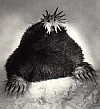  We can now posit a beginning for a very funny story that features a star-nosed mole named Siegfried who works as a basinette salesman. Okay, so far so good but now something needs to happen and that something needs to be funny. But what? What sorts of things are funny? We can now posit a beginning for a very funny story that features a star-nosed mole named Siegfried who works as a basinette salesman. Okay, so far so good but now something needs to happen and that something needs to be funny. But what? What sorts of things are funny?
The problem for the humour writer is that a lot of things that are funny in real life, or in the movies, told in a bar over a number of Cuba Libres or in New Yorker cartoons are just not very funny on the written page. Pratfalls and funny voices work really well for stage and screen comedians but neither one of those things works very well at all on the page. Quick, name a funny typeface.
Basically the humour, if there is to be any, must come from the actions of the characters and the deft description thereof. Tricky. Very tricky. Let us go back to our chosen character and map out a storyline for him.
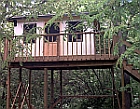 Siegfried, the star-nosed mole basinette salesman something something something something. Okay, he probably lives somewhere. Somewhere funny. A treehouse? Treehouses are funny certainly but it seems unlikely that a star-nosed mole would live in one. After all we don't want to lose the basic credibility of our story. Siegfried, the star-nosed mole basinette salesman something something something something. Okay, he probably lives somewhere. Somewhere funny. A treehouse? Treehouses are funny certainly but it seems unlikely that a star-nosed mole would live in one. After all we don't want to lose the basic credibility of our story.
 Siegfried lived in a great mansion on a hill. No, that's no good. There's really no way a mere basinette salesman could afford a mansion. And if he could, why would he still be selling basinettes? It doesn't make sense. Unless of course he inherited the mansion from his crazy old Aunt, Presdigiosa, and had to struggle to sell enough basinettes to pay for its upkeep. Siegfried lived in a great mansion on a hill. No, that's no good. There's really no way a mere basinette salesman could afford a mansion. And if he could, why would he still be selling basinettes? It doesn't make sense. Unless of course he inherited the mansion from his crazy old Aunt, Presdigiosa, and had to struggle to sell enough basinettes to pay for its upkeep.
continued in the second column
|
continued from the first column
That's pretty good. Crazy aunts are funny. But maybe a dead aunt isn't. Too much of a downer right at the beginning. Okay, how about this: Siegfried, the basinette selling star-nosed mole lived WITH his crazy old Aunt Presdigiosa in a great big mansion on a hill (the great big adjectival construction is notoriously funny). The mansion was pretty rundown and mostly they kept to two rooms on the second floor and left the rest of it unheated and unlit in order to save money. There. That's funny and just the teensiest bit poignant.
Now what? We have two characters, both star-nosed moles and a fairly decent setting but in order for the story to develop we need another character. But not another mole, we need conflict. How about a rabbit? Rabbit's are funny.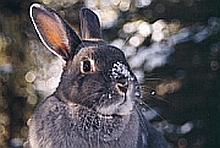 Now the rabbit needs a name. Let's not do the German thing again. If we call him Gunther or Reiner or something like that it's pretty likely that our readers will end up confusing him with Siegfried. In fact I think I already have. How about Mr. Binky? I never really went into this earlier but calling animals Mr. Or Mrs. Or Miss _______ is usually good for a laugh. Ms. for some reason isn't. I don't know why. The last name should end in 'les' or 'y' as a rule. Good examples are: Mr. Tiggles, Mr. Biggly, Mrs. Tootles, or Miss Banana. Although lot of people do it, I would personally recommend staying away from such obvious gags as Miss Demeanor or Miss Apprehension or Mr. Call. Next thing you know you've written a story featuring Corporal Punishment and Hugh Jazz and nobody wants that. Anyway back to our story. Mr. Binky is a tenant of Siegfried's and his aunts and although he is a rabbit he insists that he is a hare. This makes him funnier. There is nothing funnier and believe me I've checked, than a rabbit who puts on airs. You could also mention that he was constantly ironing his little vests or blow-drying his tail. These sorts of details can create pretty funny little pictures in the heads of your readers. Now the rabbit needs a name. Let's not do the German thing again. If we call him Gunther or Reiner or something like that it's pretty likely that our readers will end up confusing him with Siegfried. In fact I think I already have. How about Mr. Binky? I never really went into this earlier but calling animals Mr. Or Mrs. Or Miss _______ is usually good for a laugh. Ms. for some reason isn't. I don't know why. The last name should end in 'les' or 'y' as a rule. Good examples are: Mr. Tiggles, Mr. Biggly, Mrs. Tootles, or Miss Banana. Although lot of people do it, I would personally recommend staying away from such obvious gags as Miss Demeanor or Miss Apprehension or Mr. Call. Next thing you know you've written a story featuring Corporal Punishment and Hugh Jazz and nobody wants that. Anyway back to our story. Mr. Binky is a tenant of Siegfried's and his aunts and although he is a rabbit he insists that he is a hare. This makes him funnier. There is nothing funnier and believe me I've checked, than a rabbit who puts on airs. You could also mention that he was constantly ironing his little vests or blow-drying his tail. These sorts of details can create pretty funny little pictures in the heads of your readers.
So, so far we have Siegfried and his aunt living in their rundown mansion with their difficult tenant Mr. Binky. Oops, we forgot to give Mr. Binky a job. Let's make him a fire chief. Now that we have characters and a setting we are ready for what real writers like to call a "plot". This is where something happens. This is the "verb". This is the action. This is really the whole story. The things that happen. What does Siegfried do? What does his aunt do? What does Mr. Binky do?
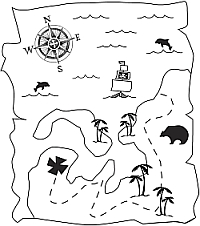 You know, really years ago humour writers discovered that a plot wasn't strictly necessary for a funny story. Once you had funny characters and a funny setting did you really need something funny to happen? Wouldn't that be just a little too much? I mean how much better Siegfried's story if we have him, say, decide to renovate his house and then, say, when he's tearing down one of the walls in what used to be the maid's room but that he's trying to convert into a smokehouse, he finds an old map? Does it really make the story funnier if he discovers that it's really a treasure map of the very house he's living in and the treasure (marked by a big X of course) appears to be buried in Mr. Binky's room? You know, really years ago humour writers discovered that a plot wasn't strictly necessary for a funny story. Once you had funny characters and a funny setting did you really need something funny to happen? Wouldn't that be just a little too much? I mean how much better Siegfried's story if we have him, say, decide to renovate his house and then, say, when he's tearing down one of the walls in what used to be the maid's room but that he's trying to convert into a smokehouse, he finds an old map? Does it really make the story funnier if he discovers that it's really a treasure map of the very house he's living in and the treasure (marked by a big X of course) appears to be buried in Mr. Binky's room?
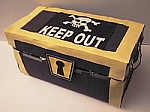 Actually that's not bad. I think we may have the makings of a funny story here. Well, except for an ending and I guess Siegfried has to do something with the map too. Sneak into Mr. Binky's room, almost get caught (maybe he hides under the bed that's always funny) and eventually find the treasure. Or maybe just what he thinks is the treasure. Actually that's not bad. I think we may have the makings of a funny story here. Well, except for an ending and I guess Siegfried has to do something with the map too. Sneak into Mr. Binky's room, almost get caught (maybe he hides under the bed that's always funny) and eventually find the treasure. Or maybe just what he thinks is the treasure.
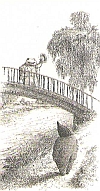 But this is all beginning to seem rather familiar. I have the sense that I have read all this before or maybe I've seen the movie. I don't think the main character was a star-nosed mole though. They are rarely leading men. Although isn't there a mole in those Wind in the Willows thingies? Come to think of it, is this part of the Wind in the Willows? I don't clearly remember. It's been weeks since I read it. But this is all beginning to seem rather familiar. I have the sense that I have read all this before or maybe I've seen the movie. I don't think the main character was a star-nosed mole though. They are rarely leading men. Although isn't there a mole in those Wind in the Willows thingies? Come to think of it, is this part of the Wind in the Willows? I don't clearly remember. It's been weeks since I read it.
You see what's happened here? In our effort to ensure funniness we have slipped into someone else's formula. That's bad. If we have to rely on a formula it's best to create our own.
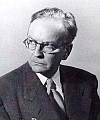  But how do we do that? Well, first of all we must figure out what it is that we are good at. Raymond Chandler once said that whenever he got stuck in a story he had a man burst into the room with a gun. I always thought he meant that someone in his employ would do this in order to frighten him back into working but I see now that I was wrong. He meant in the story. At least I think it was Raymond Chandler. I've been saying it was Raymond Chandler for years but it may, in fact, have been Alice Walker. But how do we do that? Well, first of all we must figure out what it is that we are good at. Raymond Chandler once said that whenever he got stuck in a story he had a man burst into the room with a gun. I always thought he meant that someone in his employ would do this in order to frighten him back into working but I see now that I was wrong. He meant in the story. At least I think it was Raymond Chandler. I've been saying it was Raymond Chandler for years but it may, in fact, have been Alice Walker.
 At any rate, both Alice Walker and Raymond Chandler had formulas (or formulae if you prefer) to help them when they got stuck. These are essential little tricks for a writer. There is, also Hitchcock's famous McGuffin. A McGuffin is an object that works as a plot device. The most famous example being the Maltese Falcon. Now I hear you saying "But the Maltese Falcon isn't funny!" and I'm afraid you've missed the point. At any rate, both Alice Walker and Raymond Chandler had formulas (or formulae if you prefer) to help them when they got stuck. These are essential little tricks for a writer. There is, also Hitchcock's famous McGuffin. A McGuffin is an object that works as a plot device. The most famous example being the Maltese Falcon. Now I hear you saying "But the Maltese Falcon isn't funny!" and I'm afraid you've missed the point.
The Maltese Falcon (I'm speaking here of the statuette) gives the characters something to focus on. 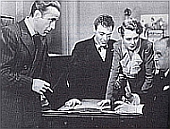 Imagine the Maltese Falcon (the story that is, or, if you prefer, the movie) but without the Maltese Falcon (the statuette). Essentially what you're left with is Humphrey Bogart, Sidney Greenstreet, Mary Astor and Peter Lorre just sitting around in a room. Now that might make for an interesting evening in your home (especially now as all those individuals are deceased) but as a story it leaves a lot to be desired. It is the Maltese Falcon (the statuette) that makes all the stuff that happens happen. Imagine the Maltese Falcon (the story that is, or, if you prefer, the movie) but without the Maltese Falcon (the statuette). Essentially what you're left with is Humphrey Bogart, Sidney Greenstreet, Mary Astor and Peter Lorre just sitting around in a room. Now that might make for an interesting evening in your home (especially now as all those individuals are deceased) but as a story it leaves a lot to be desired. It is the Maltese Falcon (the statuette) that makes all the stuff that happens happen.
Now for our purposes it is necessary to have a MacGuffin or plot device or formula that makes funny stuff happen. And what would that be? Here is a partial list of possible humorous macguffins.
 1) sock puppet– sock puppets are always funny; that is, they are always funny in stories, sometimes a sock puppet's live show is not even borderline amusing. 1) sock puppet– sock puppets are always funny; that is, they are always funny in stories, sometimes a sock puppet's live show is not even borderline amusing.
 2) Bessemer converter– any really large piece of industrial machinery is funny especially if it has a reasonably long name. As sort of a sidebar – a "slag heap" is also always funny. 2) Bessemer converter– any really large piece of industrial machinery is funny especially if it has a reasonably long name. As sort of a sidebar – a "slag heap" is also always funny.
 3) The 11th Edition of the Encyclopedia Brittanica - this should be self-explanatory but books are always funny and encyclopedias are the funniest of books. 3) The 11th Edition of the Encyclopedia Brittanica - this should be self-explanatory but books are always funny and encyclopedias are the funniest of books.
 4) Muffin tins– these should be used carefully. They are funniest in large quantities, as in the sentence:
"Osvaldo opened the door of the antechamber only to swept off his pins by a veritable avalanche of soiled muffin tins."
The funniness of that sentence lies not just with the muffin tins but with the powerful imagery. It's really quite stunning. Also using the word "pins" instead of legs is funny. An antechamber is kind of a funny room and the muffin tins are made even funnier by the addition of the word "soiled". Almost everything is funnier if it is soiled. That is, in a story. Many soiled items are not funny in reality. Trust me on this one. 4) Muffin tins– these should be used carefully. They are funniest in large quantities, as in the sentence:
"Osvaldo opened the door of the antechamber only to swept off his pins by a veritable avalanche of soiled muffin tins."
The funniness of that sentence lies not just with the muffin tins but with the powerful imagery. It's really quite stunning. Also using the word "pins" instead of legs is funny. An antechamber is kind of a funny room and the muffin tins are made even funnier by the addition of the word "soiled". Almost everything is funnier if it is soiled. That is, in a story. Many soiled items are not funny in reality. Trust me on this one.
  5) a wagon – wagons of the little red metal variety are funny but so are old wooden ones even if they are quite large. If you are in doubt as to the funniness of your particular wagon try having it pulled by something unusual. Micefor instance. And by the way a "team of mice" is funnier than just plain old mice. 5) a wagon – wagons of the little red metal variety are funny but so are old wooden ones even if they are quite large. If you are in doubt as to the funniness of your particular wagon try having it pulled by something unusual. Micefor instance. And by the way a "team of mice" is funnier than just plain old mice.
But this is merely a sampling of possible mcguffins. There are certainly others. And there are other ways to advance a story without resorting to to these cheap tricks.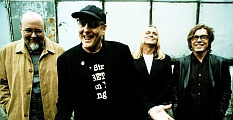 Although many people, some of them writers, swear by the basic plot as a way to get from the beginning of the story, you remember the beginning – Siegfried and his aunt living in the mansion, to the end I would have to say that I have found what I consider to be a much better technique. The advantage of my technique is that it requires all most no skill and is much less restrictive than being married to some stupid plot. Besides being a very effective way of filling a series of pages with words, it moves the story along and, and this is the real kicker, it provides an ending. Although many people, some of them writers, swear by the basic plot as a way to get from the beginning of the story, you remember the beginning – Siegfried and his aunt living in the mansion, to the end I would have to say that I have found what I consider to be a much better technique. The advantage of my technique is that it requires all most no skill and is much less restrictive than being married to some stupid plot. Besides being a very effective way of filling a series of pages with words, it moves the story along and, and this is the real kicker, it provides an ending.
 Ah yes, the ending I hear you sigh – does that mean this guy is going to finally shut up? Yes, yes it does. I have one final piece of information to impart to you and then I shall depart and leave you alone to consider what you have heard here today. Or not. That is entirely up to you. You may choose to completely disregard every single piece of advice I have given you. You may think you know better. I would not say otherwise. It is totally possible that you are a much funnier person Ah yes, the ending I hear you sigh – does that mean this guy is going to finally shut up? Yes, yes it does. I have one final piece of information to impart to you and then I shall depart and leave you alone to consider what you have heard here today. Or not. That is entirely up to you. You may choose to completely disregard every single piece of advice I have given you. You may think you know better. I would not say otherwise. It is totally possible that you are a much funnier person than I am. You may have written much funnier things. Maybe when you were in elementary school. I don't dispute it. But this last piece of information is, I truly believe, valuable. If you take nothing else away from this morning besides a blinding headache and a cast iron promise to yourself to never, ever attend free lectures again for the course of your natural life you should at least consider the following: than I am. You may have written much funnier things. Maybe when you were in elementary school. I don't dispute it. But this last piece of information is, I truly believe, valuable. If you take nothing else away from this morning besides a blinding headache and a cast iron promise to yourself to never, ever attend free lectures again for the course of your natural life you should at least consider the following:
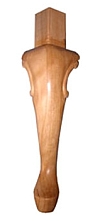 The digression. The digression is a wonderful trick I learned years ago from someone I don't care to credit. He was a terrible terrible man who frightened me greatly. He had an awful leer on his face most of the time and wasn't all that sweet to look at even when he wasn't leering. But he had an amazing collection of Queen Anne period doggie toys that he let me play with (I was in my early thirties then) and he would hum dirty limericks (or at least I assume they were dirty limericks) and rock on a tiny rocking horse while I played. He was a large man and it was strange to see him on that little horse. I often thought that it would surely break under the strain but it was quite old and I think they just made things a lot better then. It was solid wood certainly. I couldn't tell you what kind. I don't really know that much about wood. I can sort of tell the difference between a few varieties of trees. For instance, I can tell an oak from a poplar but I get lost a bit beyond that. I'm the same way with flowers. I know the obvious ones like roses and daisies but I wouldn't know an amaryllis if it showed up on my doorstep with a big sign. The digression. The digression is a wonderful trick I learned years ago from someone I don't care to credit. He was a terrible terrible man who frightened me greatly. He had an awful leer on his face most of the time and wasn't all that sweet to look at even when he wasn't leering. But he had an amazing collection of Queen Anne period doggie toys that he let me play with (I was in my early thirties then) and he would hum dirty limericks (or at least I assume they were dirty limericks) and rock on a tiny rocking horse while I played. He was a large man and it was strange to see him on that little horse. I often thought that it would surely break under the strain but it was quite old and I think they just made things a lot better then. It was solid wood certainly. I couldn't tell you what kind. I don't really know that much about wood. I can sort of tell the difference between a few varieties of trees. For instance, I can tell an oak from a poplar but I get lost a bit beyond that. I'm the same way with flowers. I know the obvious ones like roses and daisies but I wouldn't know an amaryllis if it showed up on my doorstep with a big sign.
 That would be pretty unlikely I think. Even if an amaryllis, and like I said, I'm not very familiar with them, even if an amaryllis could some how sort out holding up a sign, I'm pretty sure it couldn't make it to my door under its own steam. That would be pretty unlikely I think. Even if an amaryllis, and like I said, I'm not very familiar with them, even if an amaryllis could some how sort out holding up a sign, I'm pretty sure it couldn't make it to my door under its own steam.
Now there's an odd expression for us to still be using in this day and age (speaking of odd expressions). Can you name one single mode of transportation that still relies on steam power? Well, can you?
Hugh Briss
|
 , the very best place to start is, at the very beginning.
, the very best place to start is, at the very beginning. (the Wizard of Menlo Park) invented the light bulb. This was considered mostly a good thing but the people in 1881 weren't all that impressed because it meant Edison was up all hours of the night inventing things and playing his banjo. But it really wasn't only Edison's fault. We could, if we had nothing better to do stumble back a little bit further
(the Wizard of Menlo Park) invented the light bulb. This was considered mostly a good thing but the people in 1881 weren't all that impressed because it meant Edison was up all hours of the night inventing things and playing his banjo. But it really wasn't only Edison's fault. We could, if we had nothing better to do stumble back a little bit further and we would discover that it was in 1811 that Sir Humphrey Davy discovered that passing a electric arc between two poles produced light. History does not record how the two poles felt about this.
and we would discover that it was in 1811 that Sir Humphrey Davy discovered that passing a electric arc between two poles produced light. History does not record how the two poles felt about this. You could use a pen or you could use a pencil . A pencil is good because so many of them come with a little eraser thingy on the non-writing end which can be used for removing any unfunny sentences or even words that somehow manage to get written down. (That is provided you notice).
You could use a pen or you could use a pencil . A pencil is good because so many of them come with a little eraser thingy on the non-writing end which can be used for removing any unfunny sentences or even words that somehow manage to get written down. (That is provided you notice). These are only two suggestions though. One can, of course, write funny things using a crayon, a lipstick, a piece of charcoal or even just a stick if you happen to be standing (or squatting) on a beach or near wet cement. There is another possibility for writing in the winter but it involves consuming large quantities of fluid before hand. I have no slide but this raises the interesting question of what one writes ON.
These are only two suggestions though. One can, of course, write funny things using a crayon, a lipstick, a piece of charcoal or even just a stick if you happen to be standing (or squatting) on a beach or near wet cement. There is another possibility for writing in the winter but it involves consuming large quantities of fluid before hand. I have no slide but this raises the interesting question of what one writes ON. Paper can be lined or unlined, white or coloured(although I personally wouldn't recommend black as it can be pretty depressing). But the most common sight that confronts and confounds a beginning writer is the blank white page.
Paper can be lined or unlined, white or coloured(although I personally wouldn't recommend black as it can be pretty depressing). But the most common sight that confronts and confounds a beginning writer is the blank white page. .
. Okay, so now you're started. What next? The best thing to do is to introduce a funny character. If this is a personal essay you're writing then of course the funny character is you. Try to play up the ridiculous aspects of your personality. There must be plenty of them or you wouldn't be here would you? You can certainly begin by mocking your appearance - say, your over-sized ears, hilarious overbite or super-bushy eyebrows
Okay, so now you're started. What next? The best thing to do is to introduce a funny character. If this is a personal essay you're writing then of course the funny character is you. Try to play up the ridiculous aspects of your personality. There must be plenty of them or you wouldn't be here would you? You can certainly begin by mocking your appearance - say, your over-sized ears, hilarious overbite or super-bushy eyebrows  but I find it is sometimes best to avoid this sort of thing. The last thing you want to do is make yourself cry. In my own case this is almost ludicrously easy.
but I find it is sometimes best to avoid this sort of thing. The last thing you want to do is make yourself cry. In my own case this is almost ludicrously easy. is close at hand. Start with a funny name. What sort of names are funny? Almost all German sounding names are funny, except, of course, to the Germans. The Germans, God bless 'em, can call each other Brunhilde and Siegfried without batting an eyelash but we are unable to do so without, at the least, suppressing a snicker. Use this to your advantage.
is close at hand. Start with a funny name. What sort of names are funny? Almost all German sounding names are funny, except, of course, to the Germans. The Germans, God bless 'em, can call each other Brunhilde and Siegfried without batting an eyelash but we are unable to do so without, at the least, suppressing a snicker. Use this to your advantage. Incongruity is the key to laughs when it comes to naming characters. An impressive name like Reginald Forsythe, when attached to a lobster or a mailman, is funny. Although one should never underrate the humourous capabilities of a simple monosyllable of a name like Bob. As in Bob the three-toed sloth or Bob the amateur phrenologist. Also the name Norman
Incongruity is the key to laughs when it comes to naming characters. An impressive name like Reginald Forsythe, when attached to a lobster or a mailman, is funny. Although one should never underrate the humourous capabilities of a simple monosyllable of a name like Bob. As in Bob the three-toed sloth or Bob the amateur phrenologist. Also the name Norman is always funny.
is always funny. of a nursing sister from Villanova University whose name is...you guessed it – Margarella. But even so I made up the name Margarella. Presdigiosa, Fenna and Granulata are all made up names and damn funny ones at that. If you are ever in doubt as to the funniness of a girl's name it is best to err on the side of too many syllables. Monosyllabic women's names are not funny.
of a nursing sister from Villanova University whose name is...you guessed it – Margarella. But even so I made up the name Margarella. Presdigiosa, Fenna and Granulata are all made up names and damn funny ones at that. If you are ever in doubt as to the funniness of a girl's name it is best to err on the side of too many syllables. Monosyllabic women's names are not funny.
 Once you have named your character it is time to add distinguishing (and amusing) characteristics. Anthropomorphism is always a safe bet. Making your protagonist an animal will cover up any inability on your part to write realistic characters. People are far less critical of the behaviour of badgers and owls in a story than they are of real human beings.
Once you have named your character it is time to add distinguishing (and amusing) characteristics. Anthropomorphism is always a safe bet. Making your protagonist an animal will cover up any inability on your part to write realistic characters. People are far less critical of the behaviour of badgers and owls in a story than they are of real human beings. Your critics will be less likely to decry the logical inconsistencies in the behaviour of an aardvark named Waldheim than in an unemployed adulterer named Tom. Just think of how few critical essays are devoted to the work of Thornton W. Burgess as opposed to that of, say, Thornton Wilder.
Your critics will be less likely to decry the logical inconsistencies in the behaviour of an aardvark named Waldheim than in an unemployed adulterer named Tom. Just think of how few critical essays are devoted to the work of Thornton W. Burgess as opposed to that of, say, Thornton Wilder.
 A hostile and insane tiger can be terribly frightening while a Satanic gerbil is merely amusing. I mean here within the confines of a story. Living or indeed working with a Satanic gerbil is not amusing at all. It can be extremely trying. I worked on a loading dock briefly with a Satanic gerbil called Mr. Tinkles and he was constantly trying to run over my foot with the pallet jack and pushing over stacks of boxes near me. I was pretty happy when he was inevitably promoted.
A hostile and insane tiger can be terribly frightening while a Satanic gerbil is merely amusing. I mean here within the confines of a story. Living or indeed working with a Satanic gerbil is not amusing at all. It can be extremely trying. I worked on a loading dock briefly with a Satanic gerbil called Mr. Tinkles and he was constantly trying to run over my foot with the pallet jack and pushing over stacks of boxes near me. I was pretty happy when he was inevitably promoted. Some professions are by their very nature funny. In this category we can include fire-chief, sous-chef, small engine repairman or woman, cowboy, duck wrangler, basinette salesman, croupier and UPS driver. (For some unknown reason driving for Fed Ex is not funny. Few people know this but the movie Castaway was originally made about a UPS guy but in the early previews test audiences snickered during the sad bits and the film had to be entirely reshot.) If you are in doubt as to the humourous quality of any story you happen to be working on it is a good idea to give your main character one of these jobs.
Some professions are by their very nature funny. In this category we can include fire-chief, sous-chef, small engine repairman or woman, cowboy, duck wrangler, basinette salesman, croupier and UPS driver. (For some unknown reason driving for Fed Ex is not funny. Few people know this but the movie Castaway was originally made about a UPS guy but in the early previews test audiences snickered during the sad bits and the film had to be entirely reshot.) If you are in doubt as to the humourous quality of any story you happen to be working on it is a good idea to give your main character one of these jobs.
 We can now posit a beginning for a very funny story that features a star-nosed mole named Siegfried who works as a basinette salesman. Okay, so far so good but now something needs to happen and that something needs to be funny. But what? What sorts of things are funny?
We can now posit a beginning for a very funny story that features a star-nosed mole named Siegfried who works as a basinette salesman. Okay, so far so good but now something needs to happen and that something needs to be funny. But what? What sorts of things are funny? Siegfried, the star-nosed mole basinette salesman something something something something. Okay, he probably lives somewhere. Somewhere funny. A treehouse? Treehouses are funny certainly but it seems unlikely that a star-nosed mole would live in one. After all we don't want to lose the basic credibility of our story.
Siegfried, the star-nosed mole basinette salesman something something something something. Okay, he probably lives somewhere. Somewhere funny. A treehouse? Treehouses are funny certainly but it seems unlikely that a star-nosed mole would live in one. After all we don't want to lose the basic credibility of our story.  Siegfried lived in a great mansion on a hill. No, that's no good. There's really no way a mere basinette salesman could afford a mansion. And if he could, why would he still be selling basinettes? It doesn't make sense. Unless of course he inherited the mansion from his crazy old Aunt, Presdigiosa, and had to struggle to sell enough basinettes to pay for its upkeep.
Siegfried lived in a great mansion on a hill. No, that's no good. There's really no way a mere basinette salesman could afford a mansion. And if he could, why would he still be selling basinettes? It doesn't make sense. Unless of course he inherited the mansion from his crazy old Aunt, Presdigiosa, and had to struggle to sell enough basinettes to pay for its upkeep. Now the rabbit needs a name. Let's not do the German thing again. If we call him Gunther or Reiner or something like that it's pretty likely that our readers will end up confusing him with Siegfried. In fact I think I already have. How about Mr. Binky? I never really went into this earlier but calling animals Mr. Or Mrs. Or Miss _______ is usually good for a laugh. Ms. for some reason isn't. I don't know why. The last name should end in 'les' or 'y' as a rule. Good examples are: Mr. Tiggles, Mr. Biggly, Mrs. Tootles, or Miss Banana. Although lot of people do it, I would personally recommend staying away from such obvious gags as Miss Demeanor or Miss Apprehension or Mr. Call. Next thing you know you've written a story featuring Corporal Punishment and Hugh Jazz and nobody wants that. Anyway back to our story. Mr. Binky is a tenant of Siegfried's and his aunts and although he is a rabbit he insists that he is a hare. This makes him funnier. There is nothing funnier and believe me I've checked, than a rabbit who puts on airs. You could also mention that he was constantly ironing his little vests or blow-drying his tail. These sorts of details can create pretty funny little pictures in the heads of your readers.
Now the rabbit needs a name. Let's not do the German thing again. If we call him Gunther or Reiner or something like that it's pretty likely that our readers will end up confusing him with Siegfried. In fact I think I already have. How about Mr. Binky? I never really went into this earlier but calling animals Mr. Or Mrs. Or Miss _______ is usually good for a laugh. Ms. for some reason isn't. I don't know why. The last name should end in 'les' or 'y' as a rule. Good examples are: Mr. Tiggles, Mr. Biggly, Mrs. Tootles, or Miss Banana. Although lot of people do it, I would personally recommend staying away from such obvious gags as Miss Demeanor or Miss Apprehension or Mr. Call. Next thing you know you've written a story featuring Corporal Punishment and Hugh Jazz and nobody wants that. Anyway back to our story. Mr. Binky is a tenant of Siegfried's and his aunts and although he is a rabbit he insists that he is a hare. This makes him funnier. There is nothing funnier and believe me I've checked, than a rabbit who puts on airs. You could also mention that he was constantly ironing his little vests or blow-drying his tail. These sorts of details can create pretty funny little pictures in the heads of your readers. You know, really years ago humour writers discovered that a plot wasn't strictly necessary for a funny story. Once you had funny characters and a funny setting did you really need something funny to happen? Wouldn't that be just a little too much? I mean how much better Siegfried's story if we have him, say, decide to renovate his house and then, say, when he's tearing down one of the walls in what used to be the maid's room but that he's trying to convert into a smokehouse, he finds an old map? Does it really make the story funnier if he discovers that it's really a treasure map of the very house he's living in and the treasure (marked by a big X of course) appears to be buried in Mr. Binky's room?
You know, really years ago humour writers discovered that a plot wasn't strictly necessary for a funny story. Once you had funny characters and a funny setting did you really need something funny to happen? Wouldn't that be just a little too much? I mean how much better Siegfried's story if we have him, say, decide to renovate his house and then, say, when he's tearing down one of the walls in what used to be the maid's room but that he's trying to convert into a smokehouse, he finds an old map? Does it really make the story funnier if he discovers that it's really a treasure map of the very house he's living in and the treasure (marked by a big X of course) appears to be buried in Mr. Binky's room? Actually that's not bad. I think we may have the makings of a funny story here. Well, except for an ending and I guess Siegfried has to do something with the map too. Sneak into Mr. Binky's room, almost get caught (maybe he hides under the bed that's always funny) and eventually find the treasure. Or maybe just what he thinks is the treasure.
Actually that's not bad. I think we may have the makings of a funny story here. Well, except for an ending and I guess Siegfried has to do something with the map too. Sneak into Mr. Binky's room, almost get caught (maybe he hides under the bed that's always funny) and eventually find the treasure. Or maybe just what he thinks is the treasure. But this is all beginning to seem rather familiar. I have the sense that I have read all this before or maybe I've seen the movie. I don't think the main character was a star-nosed mole though. They are rarely leading men. Although isn't there a mole in those Wind in the Willows thingies? Come to think of it, is this part of the Wind in the Willows? I don't clearly remember. It's been weeks since I read it.
But this is all beginning to seem rather familiar. I have the sense that I have read all this before or maybe I've seen the movie. I don't think the main character was a star-nosed mole though. They are rarely leading men. Although isn't there a mole in those Wind in the Willows thingies? Come to think of it, is this part of the Wind in the Willows? I don't clearly remember. It's been weeks since I read it. 
 But how do we do that? Well, first of all we must figure out what it is that we are good at. Raymond Chandler once said that whenever he got stuck in a story he had a man burst into the room with a gun. I always thought he meant that someone in his employ would do this in order to frighten him back into working but I see now that I was wrong. He meant in the story. At least I think it was Raymond Chandler. I've been saying it was Raymond Chandler for years but it may, in fact, have been Alice Walker.
But how do we do that? Well, first of all we must figure out what it is that we are good at. Raymond Chandler once said that whenever he got stuck in a story he had a man burst into the room with a gun. I always thought he meant that someone in his employ would do this in order to frighten him back into working but I see now that I was wrong. He meant in the story. At least I think it was Raymond Chandler. I've been saying it was Raymond Chandler for years but it may, in fact, have been Alice Walker. At any rate, both Alice Walker and Raymond Chandler had formulas (or formulae if you prefer) to help them when they got stuck. These are essential little tricks for a writer. There is, also Hitchcock's famous McGuffin. A McGuffin is an object that works as a plot device. The most famous example being the Maltese Falcon. Now I hear you saying "But the Maltese Falcon isn't funny!" and I'm afraid you've missed the point.
At any rate, both Alice Walker and Raymond Chandler had formulas (or formulae if you prefer) to help them when they got stuck. These are essential little tricks for a writer. There is, also Hitchcock's famous McGuffin. A McGuffin is an object that works as a plot device. The most famous example being the Maltese Falcon. Now I hear you saying "But the Maltese Falcon isn't funny!" and I'm afraid you've missed the point. Imagine the Maltese Falcon (the story that is, or, if you prefer, the movie) but without the Maltese Falcon (the statuette). Essentially what you're left with is Humphrey Bogart, Sidney Greenstreet, Mary Astor and Peter Lorre just sitting around in a room. Now that might make for an interesting evening in your home (especially now as all those individuals are deceased) but as a story it leaves a lot to be desired. It is the Maltese Falcon (the statuette) that makes all the stuff that happens happen.
Imagine the Maltese Falcon (the story that is, or, if you prefer, the movie) but without the Maltese Falcon (the statuette). Essentially what you're left with is Humphrey Bogart, Sidney Greenstreet, Mary Astor and Peter Lorre just sitting around in a room. Now that might make for an interesting evening in your home (especially now as all those individuals are deceased) but as a story it leaves a lot to be desired. It is the Maltese Falcon (the statuette) that makes all the stuff that happens happen. 1) sock puppet– sock puppets are always funny; that is, they are always funny in stories, sometimes a sock puppet's live show is not even borderline amusing.
1) sock puppet– sock puppets are always funny; that is, they are always funny in stories, sometimes a sock puppet's live show is not even borderline amusing.
 2) Bessemer converter– any really large piece of industrial machinery is funny especially if it has a reasonably long name. As sort of a sidebar – a "slag heap" is also always funny.
2) Bessemer converter– any really large piece of industrial machinery is funny especially if it has a reasonably long name. As sort of a sidebar – a "slag heap" is also always funny.
 3) The 11th Edition of the Encyclopedia Brittanica - this should be self-explanatory but books are always funny and encyclopedias are the funniest of books.
3) The 11th Edition of the Encyclopedia Brittanica - this should be self-explanatory but books are always funny and encyclopedias are the funniest of books.
 4) Muffin tins– these should be used carefully. They are funniest in large quantities, as in the sentence:
"Osvaldo opened the door of the antechamber only to swept off his pins by a veritable avalanche of soiled muffin tins."
The funniness of that sentence lies not just with the muffin tins but with the powerful imagery. It's really quite stunning. Also using the word "pins" instead of legs is funny. An antechamber is kind of a funny room and the muffin tins are made even funnier by the addition of the word "soiled". Almost everything is funnier if it is soiled. That is, in a story. Many soiled items are not funny in reality. Trust me on this one.
4) Muffin tins– these should be used carefully. They are funniest in large quantities, as in the sentence:
"Osvaldo opened the door of the antechamber only to swept off his pins by a veritable avalanche of soiled muffin tins."
The funniness of that sentence lies not just with the muffin tins but with the powerful imagery. It's really quite stunning. Also using the word "pins" instead of legs is funny. An antechamber is kind of a funny room and the muffin tins are made even funnier by the addition of the word "soiled". Almost everything is funnier if it is soiled. That is, in a story. Many soiled items are not funny in reality. Trust me on this one.

 5) a wagon – wagons of the little red metal variety are funny but so are old wooden ones even if they are quite large. If you are in doubt as to the funniness of your particular wagon try having it pulled by something unusual. Micefor instance. And by the way a "team of mice" is funnier than just plain old mice.
5) a wagon – wagons of the little red metal variety are funny but so are old wooden ones even if they are quite large. If you are in doubt as to the funniness of your particular wagon try having it pulled by something unusual. Micefor instance. And by the way a "team of mice" is funnier than just plain old mice. Although many people, some of them writers, swear by the basic plot as a way to get from the beginning of the story, you remember the beginning – Siegfried and his aunt living in the mansion, to the end I would have to say that I have found what I consider to be a much better technique. The advantage of my technique is that it requires all most no skill and is much less restrictive than being married to some stupid plot. Besides being a very effective way of filling a series of pages with words, it moves the story along and, and this is the real kicker, it provides an ending.
Although many people, some of them writers, swear by the basic plot as a way to get from the beginning of the story, you remember the beginning – Siegfried and his aunt living in the mansion, to the end I would have to say that I have found what I consider to be a much better technique. The advantage of my technique is that it requires all most no skill and is much less restrictive than being married to some stupid plot. Besides being a very effective way of filling a series of pages with words, it moves the story along and, and this is the real kicker, it provides an ending. Ah yes, the ending I hear you sigh – does that mean this guy is going to finally shut up? Yes, yes it does. I have one final piece of information to impart to you and then I shall depart and leave you alone to consider what you have heard here today. Or not. That is entirely up to you. You may choose to completely disregard every single piece of advice I have given you. You may think you know better. I would not say otherwise. It is totally possible that you are a much funnier person
Ah yes, the ending I hear you sigh – does that mean this guy is going to finally shut up? Yes, yes it does. I have one final piece of information to impart to you and then I shall depart and leave you alone to consider what you have heard here today. Or not. That is entirely up to you. You may choose to completely disregard every single piece of advice I have given you. You may think you know better. I would not say otherwise. It is totally possible that you are a much funnier person than I am. You may have written much funnier things. Maybe when you were in elementary school. I don't dispute it. But this last piece of information is, I truly believe, valuable. If you take nothing else away from this morning besides a blinding headache and a cast iron promise to yourself to never, ever attend free lectures again for the course of your natural life you should at least consider the following:
than I am. You may have written much funnier things. Maybe when you were in elementary school. I don't dispute it. But this last piece of information is, I truly believe, valuable. If you take nothing else away from this morning besides a blinding headache and a cast iron promise to yourself to never, ever attend free lectures again for the course of your natural life you should at least consider the following: The digression. The digression is a wonderful trick I learned years ago from someone I don't care to credit. He was a terrible terrible man who frightened me greatly. He had an awful leer on his face most of the time and wasn't all that sweet to look at even when he wasn't leering. But he had an amazing collection of Queen Anne period doggie toys that he let me play with (I was in my early thirties then) and he would hum dirty limericks (or at least I assume they were dirty limericks) and rock on a tiny rocking horse while I played. He was a large man and it was strange to see him on that little horse. I often thought that it would surely break under the strain but it was quite old and I think they just made things a lot better then. It was solid wood certainly. I couldn't tell you what kind. I don't really know that much about wood. I can sort of tell the difference between a few varieties of trees. For instance, I can tell an oak from a poplar but I get lost a bit beyond that. I'm the same way with flowers. I know the obvious ones like roses and daisies but I wouldn't know an amaryllis if it showed up on my doorstep with a big sign.
The digression. The digression is a wonderful trick I learned years ago from someone I don't care to credit. He was a terrible terrible man who frightened me greatly. He had an awful leer on his face most of the time and wasn't all that sweet to look at even when he wasn't leering. But he had an amazing collection of Queen Anne period doggie toys that he let me play with (I was in my early thirties then) and he would hum dirty limericks (or at least I assume they were dirty limericks) and rock on a tiny rocking horse while I played. He was a large man and it was strange to see him on that little horse. I often thought that it would surely break under the strain but it was quite old and I think they just made things a lot better then. It was solid wood certainly. I couldn't tell you what kind. I don't really know that much about wood. I can sort of tell the difference between a few varieties of trees. For instance, I can tell an oak from a poplar but I get lost a bit beyond that. I'm the same way with flowers. I know the obvious ones like roses and daisies but I wouldn't know an amaryllis if it showed up on my doorstep with a big sign.  That would be pretty unlikely I think. Even if an amaryllis, and like I said, I'm not very familiar with them, even if an amaryllis could some how sort out holding up a sign, I'm pretty sure it couldn't make it to my door under its own steam.
That would be pretty unlikely I think. Even if an amaryllis, and like I said, I'm not very familiar with them, even if an amaryllis could some how sort out holding up a sign, I'm pretty sure it couldn't make it to my door under its own steam.